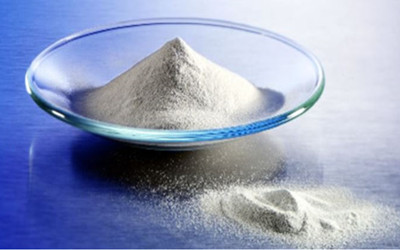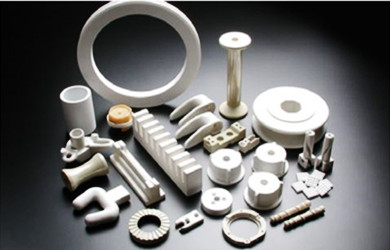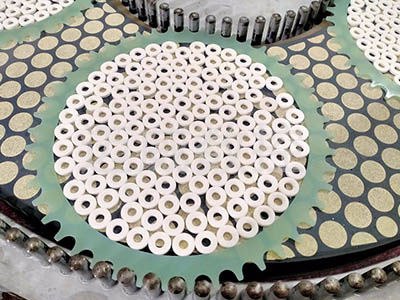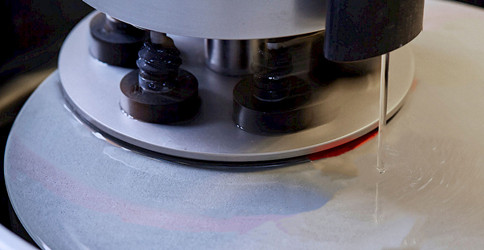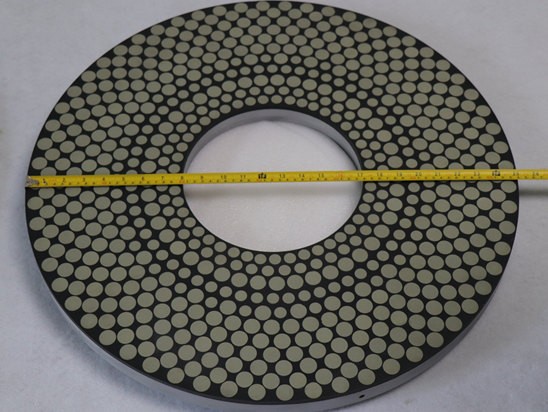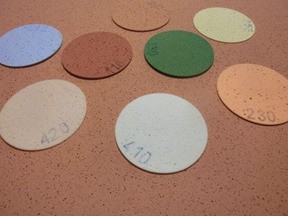High Precision Ceramic Grinding Lapping
Ceramic materials have excellent characteristics such as high strength, high hardness, low density, low expansion coefficient, wear resistance, corrosion resistance, heat insulation, and good chemical stability. They have become widely used in aerospace, petrochemical, instrumentation, machinery manufacturing and new engineering materials in nuclear industry and other fields. However, since ceramic materials have the characteristics of high brittleness, low fracture toughness, and the elastic limit and strength of the material are very close, the processing of ceramic materials is very difficult, and a slight improper processing method will cause damage to the surface layer of the workpiece, which is difficult to achieve. High-precision, high-efficiency, and high-reliability processing limits the further expansion of the application range of ceramic materials.
What is ceramic material?
Metals on the periodic table interact with light gases or highly active elements, and their compounds are generalized ceramic materials. A clear definition: ceramics are materials made of inorganic substances alone ormixed with other substances, usually referring to silicates (SiXOy), aluminates (AlxOy), borates (BxOy), phosphates (PxOy) and other raw materials as well as oxide (Oxide), nitride (Carbide), Carbide (Nitride), boride (Boride), sulfide (Sulfides) and other raw materials are prepared by a certain process. Here we only explain the functionality of ceramics that are often in contact with, including the following:
1. Electronic Ceramic
– As a solid passive component, ceramics are actually the most mainstream, such as ceramic capacitors, ceramic varistors, piezoelectric ceramics, etc. The three basic components of modern electronics: inductors (L), capacitors (C), and resistors (R) are used in large-scale development of newceramic materials. The cost of materials is low and the functionality is strong. The focus is on durability and stability. The materials are unmatched.
2. Environmentally Resistant Ceramics
– For ceramics including insulation, heat resistance, wear resistance, and acid and alkali resistance, the use of ceramics is usually accompanied by one or more of these functions. The world is wonderful. After metals are polarized by gases or active elements, metal bonds are formed. (Metal bond) Knot changed to covalent bond (Covalent bond) or ionic bond (Ion bond), so that ceramics present different properties and usability.
What are the basic characteristics of ceramic materials?
Ceramic materials have good mechanical properties, thermal properties, electrical properties, as well as certain chemical and optical properties. The mechanical propertiesof ceramic materials are mainly manifested in the strong compressive effect.
The thermal properties of ceramic materials are mainly manifested in the high melting point, which is generally above 2000℃. It has good stability at high temperatures, plus ceramic thermal conductivity is lower than metal materials, so ceramic materials can be used as a good heat insulation material.
The thermal properties of ceramic materials are also shown in the expansion coefficient is much lower than metal, when the temperature changes, its size is relatively stable. The electrical characteristics of ceramic materials are mainly manifested in that it is a very good electrical insulator, so it is widely used to make insulating devices of various voltages, even many amplifiers, record players, ultrasonic meters, medical spectrometers, etc., are made of ceramic materials as semiconductors.
Lapping and polishing processing is a super-finishing method that uses free abrasives to produce micro-removal effects on the processed surface materials to achieve processing effects. In the superfinishing and finishing of ceramic materials, especially in the precision machining of ceramic balls used in ceramic bearings, grinding and polishing have an irreplaceable position. Optical materials such as optical glass and sapphire, semiconductor materials such as silicon wafers and GaAs substrates, and ceramic materials such as Al2O3 ceramics and Si3N4 ceramics are mostly processed by grinding and polishing methods.
How to precision lapping and polishing ceramic material?
Precision Ceramic Surface Finishing
Precision ceramic surface finishing refers to a processing technology that achieves stable precision and even improves the level of machining accuracy while greatly improving the surface quality of the processed object. It is the last process of most parts. Its main functions are:
1. Deburring, rounding, chamfering, etc., smooth transition between the surfaces of ceramic parts, improving the assembly process of parts;
2. Reduce the surface roughness of ceramic parts, remove surface defects such as scratches and microscopic cracks, and improve and improve the surface quality of parts;
3. Improve the mechanical properties of the part surface, improve the stress distribution state of the part surface, and improve the service performance and life of the part;
4. Improve the gloss and brightness of the surface of the part, and improve the cleanliness of the surface of the part;
Surface finishing of precision ceramics can be divided into two categories according to the processing methods. One is a purely mechanical precision ceramic finishing method based on the principle of cutting, mainly including mirror grinding, honing, super-finishing, grinding and polishing.
Another type of high-energy processing and precision ceramic finishing methods combined with multiple processing principles, which mainly include chemical mechanical polishing, electrochemical polishing, pulse electrochemical precision ceramic finishing, electrochemical mechanical precision ceramic finishing and ultrasonic processing etc.
What is Lapping?
The general purpose of Lapping is to arrange parallelism and flatness and to get accurate alignment of parts. This is grinding method to get flat finished surface with accurate size by cutting the extremely small amount from the surface of workpiece with abrasive’s working after adding abrasive and lapping fluid between the surface of workpiece and surface plate for lapping and moving them relatively to workpiece and lap. However, the existing lapping method is not eco friendly, difficult to be cleaned and has long working time because it needs lots of abrasive and polishing fluid.
More SuperHard makes abrasive of the wheel fixed grain and attaches it to the base for lapping ceramic with wet corrosion to improve the existing lapping method. Abrasive and lapping fluid to be used are reduced with fixed abrasive grain, and ecofriendly, and easily cleaned fresh working environment is available decreasing working time and maintenance cost.
What is Polishing?
The general purpose of Polishing is to maintain parallelism and flatness, to improve surface roughness and to remove scratches after Lapping or after the whole process.
This is polishing method to get the glass-like side with consistent surface roughness of workpiece with abrasive’s working after adding abrasive and polishing fluid between the surface of workpiece and surface plate and moving them relatively to workpiece and lap similarly with lapping.
Relationship between Lapping and Polishing
It is usually difficult to tell the difference between Lapping and Polishing like the descriptions above. Simply to say, Lapping is to arrange size and accuracy of workpiece, and Polishing is the process after lapping workpiece. So, it is the process of glazing to make glass-like side instead of polishing the surface of workpiece. It is difficult to select abrasive and lap for Polishing.
Moresuperhard can provide diamond/ CBN double sided grinding disc and diamond polishing pad for corse and semi-finish and finish lapping and polishing ceremic material.

